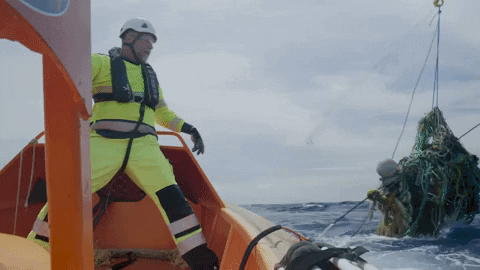Cetacean Sightings within the Great Pacific Garbage Patch
Scientific note
April 2019, Marine Biodiversity
Susan E. Gibbs, Chandra P. Salgado Kent, Boyan Slat, Damien Morales, Leila Fouda and Julia Reisser
- Publication type: Scientific note
- Journal: Marine Biodiversity
- Collaborators: The Ocean Cleanup Foundation (NL), Centre for Marine Science and Technology, Curin University (AUS), Oceans Blueprint (AUS), Centre for Marine Ecosystems Research (AUS), Blue Planet (AUS), Minderoo Foundation (AUS), School of Biological and Chemical Studies, Queen Mary University (UK), UWA Oceans Institute, University of Western Australia (AUS).
- DOI: 10.1007/s12526-019-00952-0
- Submitted: 12.07.2018
- Accepted: 15.03.2019
- Published: 09.04.2019
Abstract
Here, we report cetacean sightings made within a major oceanic accumulation zone for plastics, often referred to as the ‘Great Pacific Garbage Patch’ (GPGP). These cetacean records occurred in October 2016 and were made by sensors and trained observers aboard a Hercules C-130 aircraft surveying the GPGP at 400 m height and 140 knots speed. Four sperm whales (including a mother and calf pair), three beaked whales, two baleen whales, and at least five other cetaceans were observed. Many surface drifting plastics were also detected, including fishing nets, ropes, floats and fragmented debris. Some of these objects were close to the sighted mammals, posing entanglement and ingestion risks to animals using the GPGP as a migration corridor or core habitat. Our study demonstrates the potential exposure of several cetacean species to the high levels of plastic pollution in the area. Further research is required to evaluate the potential effects of the GPGP on marine mammal populations inhabiting the North Pacific.
- Aerial survey, Cetaceans, Great Pacific Garbage Patch, Marine mammals, Plastic pollution
